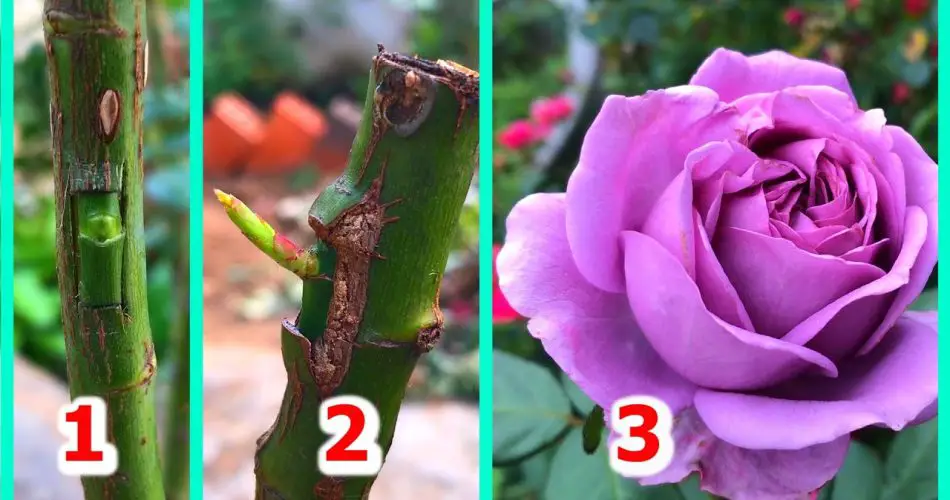Grafting is a technique used to propagate roses and create desired varieties on a single rootstock, known as a rose tree. Grafting eyes, or buds, onto a rootstock allows gardeners to combine different rose varieties for enhanced blooms and disease resistance. Here’s a guide on how to graft eyes onto a rose tree:
1. Selecting Materials:
- Choose a healthy rootstock rose plant with a strong root system and disease resistance.
- Select scion wood (branches with buds) from a desired rose variety. The scion should be from the current season’s growth and ideally similar in diameter to the rootstock.
2. Preparation:
- Make a smooth, sloping cut (approximately 45 degrees) on the rootstock, about 4-6 inches above the ground. This cut should expose the cambium layer—the green layer just beneath the bark.
- On the scion wood, cut a bud with a small sliver of wood attached. This bud will be grafted onto the rootstock.
3. Grafting:
- Insert the bud from the scion wood into the slit on the rootstock, ensuring the cambium layers align as much as possible. The bud should fit snugly into the slit.
- Secure the graft with grafting tape or rubber. Wrap the tape or rubber firmly around the graft to hold it in place and protect it from drying out.
4. Sealing and Healing:
- Seal the graft union with grafting wax or pruning sealant to prevent moisture loss and protect against infection.
- Allow the graft to heal and bond over time. This process may take several weeks to months, depending on environmental conditions and the compatibility of the graft.
5. Aftercare:
- Keep the grafted rose tree in a sheltered location with filtered sunlight and stable temperatures.
- Monitor the graft union regularly for signs of growth. Once the graft has successfully taken, new shoots and leaves will emerge from the grafted bud.
6. Maintenance:
- After the graft has established, prune away any growth below the graft union from the rootstock to focus the plant’s energy on the grafted variety.
- Provide regular care and fertilization to support healthy growth and flowering.
Grafting eyes on a rose tree requires patience and careful attention to detail, but it offers the opportunity to create unique and resilient rose varieties in your garden. By following these instructions and practicing proper grafting techniques, you can enjoy the beauty and diversity of custom grafted roses blooming on a single tree.




